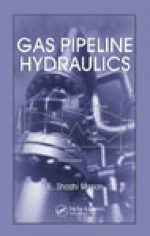Tab Article
Introduces the fundamental concepts, fluid mechanics, formulas, and economic aspects of gas pipeline systems
Demonstrates commonly used formulas such as Colebrook-White, AGA, Weymouth, and Panhandle
Discusses the piping requirements for long-distance gas transmission, including line pack, number of compressor stations, and power required
Illuminates the calculation of capital costs, operating costs, and tariff analysis to determine the optimum pipe size for a specific throughput
Contains abundant examples and problems in each chapter along with several case studies
In your day-to-day planning, design, operation, and optimization of pipelines, wading through complex formulas and theories is not the way to get the job done. Gas Pipeline Hydraulics acts as a quick-reference guide to formulas, codes, and standards encountered in the gas industry. Based on the author's 30 years of experience in manufacturing and the oil and gas industry, the book presents a step-by-step introduction to the concepts in a practical approach illustrated by real-world examples, case studies, and a wealth of problems at the end of each chapter.
Avoiding overly complex equations and theorems, Gas Pipeline Hydraulics demonstrates the calculation of pressure drop using various commonly accepted formulas. The author extends this discussion to determine total pressure required under various configurations, the necessity of pressure regulators and control valves, the comparative pros and cons of adding compressor stations versus pipe loops, mechanical strength of the pipeline, and thermal hydraulic analysis. He also introduces transient pressure analysis along with references for more in-depth study. The text concludes with the economic aspects of pipeline systems.
Containing valuable appendices that provide conversions from USCS to SI units, tables of properties of natural gas, commonly used pipe sizes, and allowable internal and hydrotest pressures, this is the most easy-to-use, hands-on reference for gas pipelines available.


